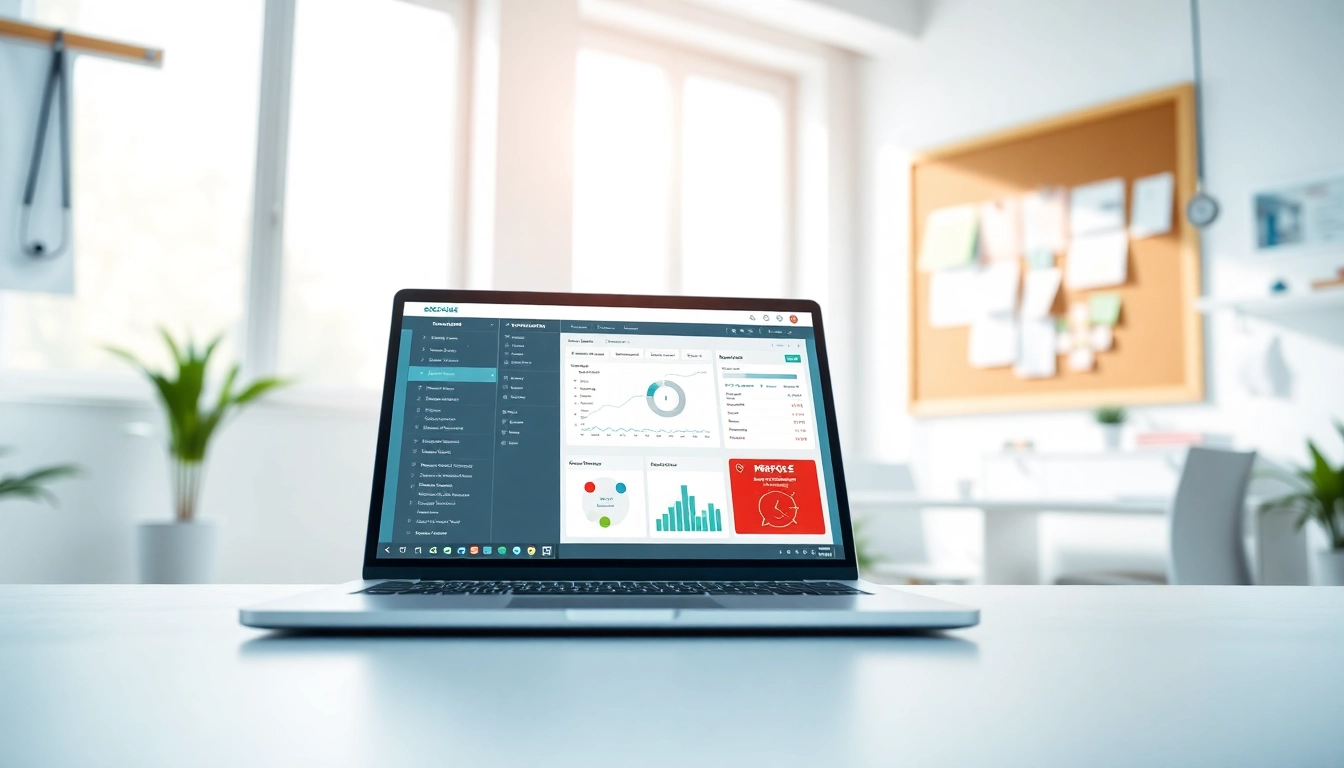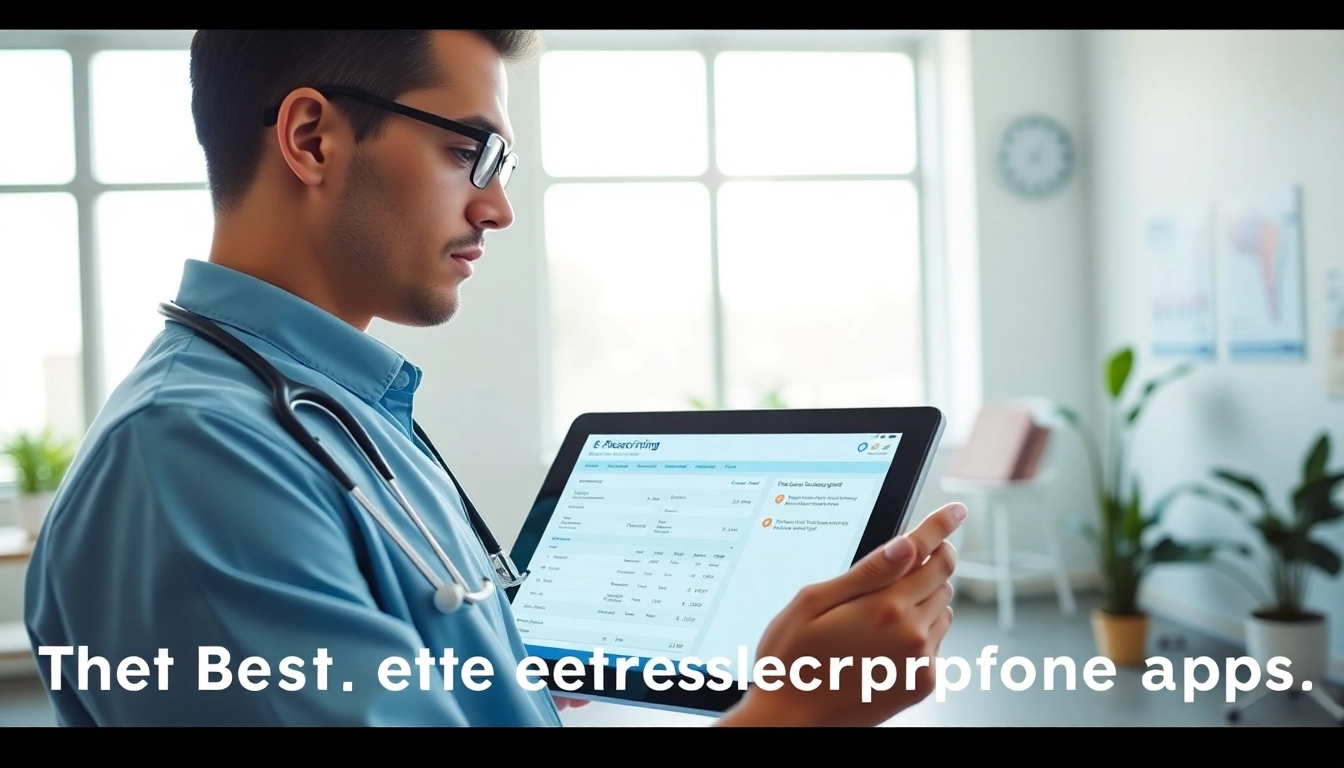Understanding ePrescribing Software
What is ePrescribing Software?
ePrescribing software, commonly referred to as electronic prescribing software, is a digital tool that allows healthcare providers to prescribe medications easily and efficiently. This technology enables clinicians to send prescriptions directly to pharmacies electronically, eliminating the need for paper prescriptions, reducing errors, and ensuring a seamless prescribing process. ePrescribing systems are integrated with electronic health records (EHR), making access to patient history and medication lists simple and secure. Moreover, these systems often include features that support medication management, alerts for potential drug interactions, and even robust analytics for improved patient outcomes.
Key Features of ePrescribing Solutions
Modern ePrescribing solutions offer a range of essential features that enhance their functionality and utility:
- Electronic Transmission: Allows prescriptions to be sent directly to pharmacies, which decreases the chances of lost prescriptions and improves fill rates.
- Drug Interaction Alerts: Provides warnings about potential interactions when a clinician prescribes medications, enhancing patient safety.
- Formulary Checks: Automatically checks if prescribed medications are covered by the patient’s insurance plan, minimizing cost barriers.
- Prescription History: Access to patients’ medication history assists providers in making informed prescribing decisions.
- Controlled Substances Management: Includes functionalities for prescribing controlled substances in compliance with regulations.
Benefits of Using ePrescribing Software
Implementing ePrescribing software in healthcare practices can lead to multiple significant benefits:
- Enhanced Accuracy: By minimizing human error traditionally associated with handwritten prescriptions, ePrescribing software significantly improves the accuracy of medication orders.
- Improved Efficiency: The speed at which prescriptions are processed helps reduce wait times for patients and pharmacists alike, optimizing workflow within medical practices.
- Increased Patient Safety: Features such as alerts for drug allergies and interactions play a crucial role in enhancing patient safety.
- Cost-Effective: By encouraging timely refill management and reducing unnecessary visits, ePrescribing can lead to cost savings for both patients and healthcare systems.
- Streamlined Communication: Facilitates better communication among healthcare providers, patients, and pharmacies, contributing to a more integrated care approach.
Evaluating ePrescribing Software Reviews
Importance of User Reviews in Decision Making
User reviews are invaluable when considering ePrescribing software. They provide insights into the real-world performance of software solutions from the perspective of those who use them daily. Evaluating eprescribing software reviews can reveal patterns regarding user satisfaction, functionality, customer support, and overall value, consequently supporting healthcare providers in making informed choices based on collective experiences.
Common Ratings and Criteria Used
- User Experience: Ease of use can significantly impact user adoption and effectiveness of the software.
- Customer Support: Access to responsive, knowledgeable support teams is crucial for solving issues quickly.
- Technical Performance: Evaluation of how well the software integrates with existing systems and its uptime reliability.
- Regulatory Compliance: Software should be compliant with federal and state regulations, such as those related to controlled substances.
- Cost vs. Value: Assessing whether the features justify the pricing relative to other solutions in the market.
How to Interpret ePrescribing Software Reviews
Interpreting user reviews requires a critical eye due to potential biases or variability in individual experiences. Here are some strategies to effectively evaluate reviews:
- Look for Patterns: Consistent mentions of specific issues or praises often indicate a genuine trend in user experience rather than isolated concerns.
- Consider the Source: Reviews from verified users or comprehensive comparison platforms tend to carry more weight than generic opinions.
- Balance Positive and Negative Feedback: Assess both sides to gain a holistic view of the software’s strengths and weaknesses.
- Use Contextual Information: Understand the context behind ratings—for instance, whether a negative review stemmed from a technical issue that has since been resolved or an ongoing usability concern.
Comparing Top ePrescribing Solutions
Criteria for Comparing ePrescribing Software
When comparing different ePrescribing solutions, it is crucial to define clear and consistent criteria to make informed decisions:
- Integration Capabilities: Examine how well the software integrates with existing EHR and practice management systems.
- Feature Set: Compare features side by side, focusing on functionalities that align with your practice’s specific needs.
- User Feedback: Gauge overall user satisfaction from various sources to identify potential advantages or drawbacks.
- Cost Structure: Analyze both upfront costs and ongoing expenses to understand long-term financial commitments.
- Customization Options: Review the flexibility of the software to adapt to unique workflows or practice requirements.
Popular ePrescribing Software Options
While there are numerous options available, certain ePrescribing software solutions have been favorably reviewed across the industry. These solutions cater to various specialties and offer distinct advantages. Therefore, it’s critical to explore multiple platforms to discern which may best fit your practice needs.
Price Comparison and Value Assessment
Assessing the cost of ePrescribing software should not focus solely on the purchase price but also consider the overall value provided. Costs can vary significantly based on factors like:
- Subscription vs. One-Time Fee: Some software operates on a subscription model, meaning recurring annual or monthly fees, while others may require a one-time payment.
- Scalability: Evaluate whether the software can accommodate future growth without necessitating significant additional investment.
- Training and Support Costs: Count any associated expenses for training staff or accessing premium customer support options.
- Long-Term Benefits: Consider how the software can improve efficiency, reduce errors, and enhance patient safety over time, which may counterbalance initial costs.
Challenges in Implementing ePrescribing Software
Overcoming Common Obstacles in Adoption
Transitioning to ePrescribing software does not come without its challenges. Common obstacles may include:
- Staff Resistance: Employees may resist the new system out of fear or discomfort with technology. Overcoming this requires clear communication about benefits and thorough training.
- Technical Issues: Initial system bugs or integration problems can arise and hinder productivity. It is vital to have a reliable support channel when implementing new software.
- Costs of Transition: Initial financial burdens related to training and system setup can deter practices from moving forward; budget planning can help alleviate these concerns.
Integration with Existing Systems
Integrating ePrescribing software with existing EHR and other systems is crucial for maximizing its functionality. Challenges often include:
- Compatibility Issues: Disparities between systems may necessitate custom solutions that increase costs.
- Data Migration: Transferring historical patient data accurately can pose significant hurdles; ensuring thorough data mapping during the initial integration phase is essential.
- Change Management: Adapting workflows to fit new software functionalities can be difficult for staff accustomed to past systems.
Training Staff for ePrescribing Capabilities
A critical component of successful ePrescribing implementation is comprehensive training. Considerations include:
- Structured Training Programs: Develop well-defined training schedules that include hands-on practice and access to learning resources.
- Ongoing Support: Provide continuous support post-implementation to address questions and reinforce learning.
- Feedback Mechanisms: Implement systems to gather feedback from users to adjust training processes as needed.
Future Trends in ePrescribing
Technological Innovations to Watch
Evolving technology continuously shapes the landscape of ePrescribing. Anticipated innovations include:
- Artificial Intelligence: AI could enhance clinical decision support tools, automating alerts for drug interactions and recommended therapies.
- Mobile Accessibility: Advances in mobile technologies might allow healthcare providers to manage prescriptions directly from mobile devices, providing on-the-go solutions.
- Blockchain Technology: Secure sharing of patients’ prescription histories using blockchain can enhance security and transparency.
The Role of Telehealth in ePrescribing
As telehealth gains traction, ePrescribing continues to integrate with remote care models. This integration allows providers to prescribe medications during telehealth consultations, making treatment more accessible for patients who might not otherwise visit clinics. Moreover, ePrescribing can ensure that patients have immediate access to medications they need post-consultation, streamlining care delivery.
Anticipated Changes in Regulations and Standards
As the healthcare landscape evolves, regulatory changes regarding ePrescribing and medication management are expected. Key areas of focus may include:
- Enhanced Security Protocols: Anticipated updates to protect patient data integrity and privacy.
- Standardization of ePrescribing Practices: Efforts to create uniform processes across different platforms and providers to enhance interoperability.
- Increased Accountability: Regulatory bodies may require more robust tracking and monitoring of prescriptions to prevent abuse and ensure compliance.















Leave a Reply